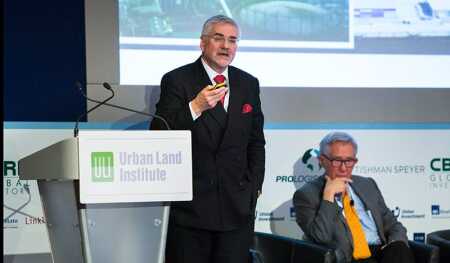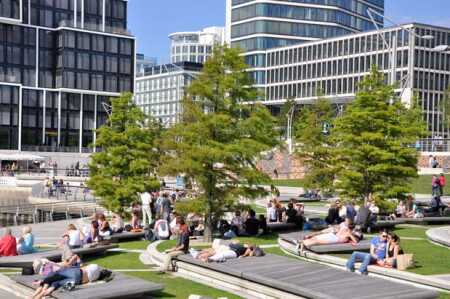
Jürgen Bruns-Berentelg, who is overseeing the transformation of Hamburg’s former industrial harbor into the mixed-use HafenCity district, told the ULI Europe Annual Conference in Paris that integrated urban development and a variety of uses would incentivize walkers at a “mental rather than physical level.”
Decentralized spatial urban planning, rather than walkability, is the most effective tool for building healthy cities, says the chief executive officer of Europe’s largest inner-city development project.
Jürgen Bruns-Berentelg, who is overseeing the transformation of Hamburg’s former industrial harbor into the mixed-use HafenCity district, told the ULI Europe Annual Conference in Paris that integrated urban development and a variety of uses would incentivize walkers at a “mental rather than physical level.”
Related: HafenCity – 2013 Global Awards for Excellence Winner
“It is about connectivity. You don’t need centralized spaces, but a differentiated network that links diverse uses together. Walkability is far too narrow,” he said.
Public spaces account for one quarter of HafenCity’s 314 acres (127 ha), with promenades and parks spread evenly across the district.
The development, which will extend the existing city center by 40 percent when complete, deliberately mixes social and cultural institutions, commercial structures, residential buildings, and high- and low-income housing to foster diversity and excitement.
Extensive bike paths, pedestrian areas, buses, and subway connectivity as well as car-sharing services for electric vehicles also are being rolled out to help maintain car use at 25 percent of all HafenCity’s traffic movements.
Bruns-Berentelg said the development team was “ripping down walls” between private and public spaces to incentivize walking and healthier living.
“We’ve been indirectly dealing with [walkability] from the perspective of integrated urban development, not from the perspective of health,” he said.
Bruns-Berentelg said the development team was looking at not only the length of streets, but also the number of nodes and choices people can make while they are walking along them, adding that it was important to offer residents and visitors to the district differentiated public spaces that led them to shops and exhibition spaces.
“The walking process can be redirected. It is not only a linear issue but [also] a spatial extension issue. It allows the use of space for leisure activities and provides incentives to walk within these spaces,” he explained.
“The city center is very much a public place, not just a commercial center. It is important to integrate this into thinking around what people might expect from a place,” he added.
Bruns-Berentelg said a basketball court had been integrated opposite a residential area to encourage children to use the space.
“People say this produces noise, children are loud—why do it? But it has been constructed as a soft space to reduce noise,” he said.
“This way, sports becomes integrated, families can send their children down to play, and this has good consequences for health.”





